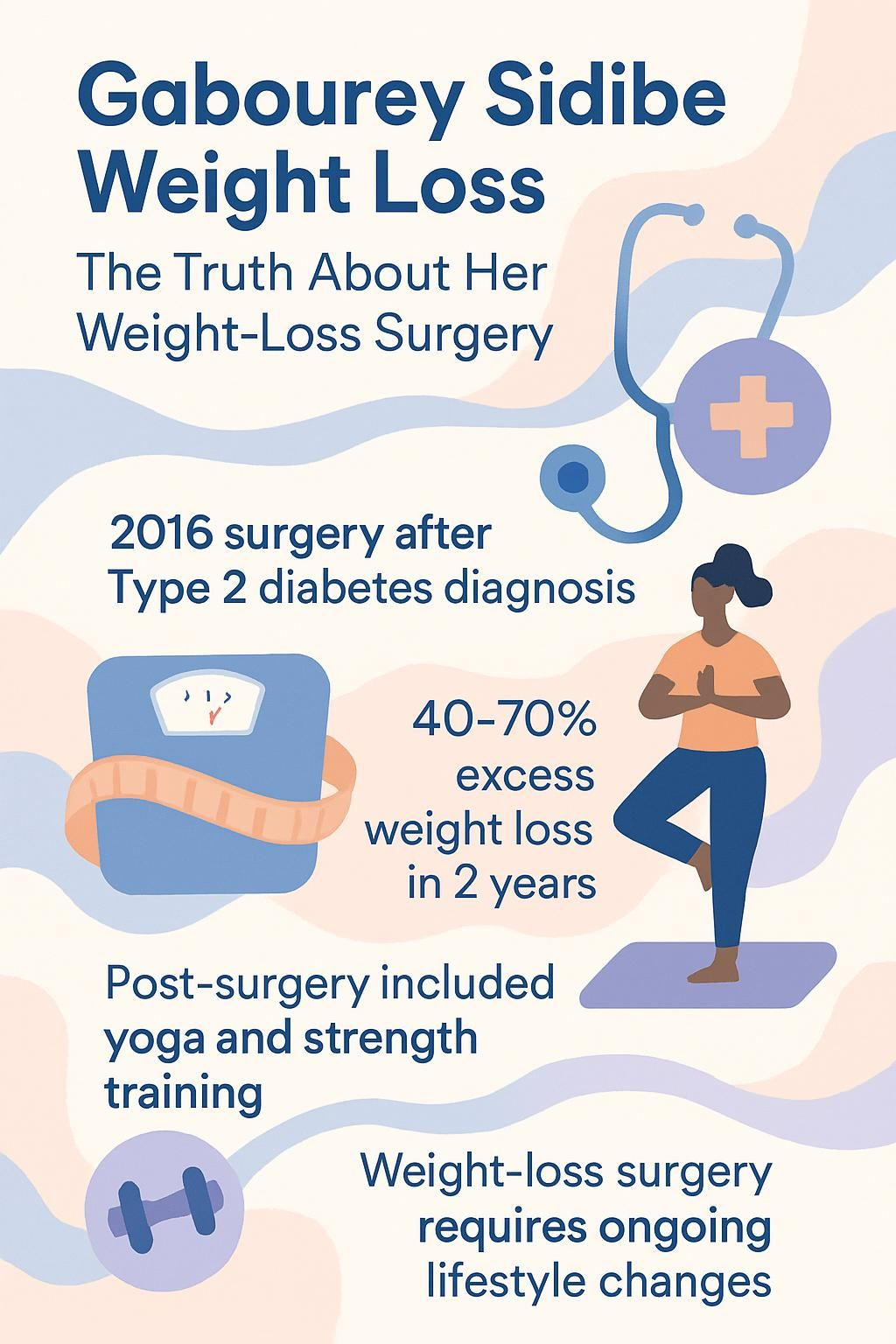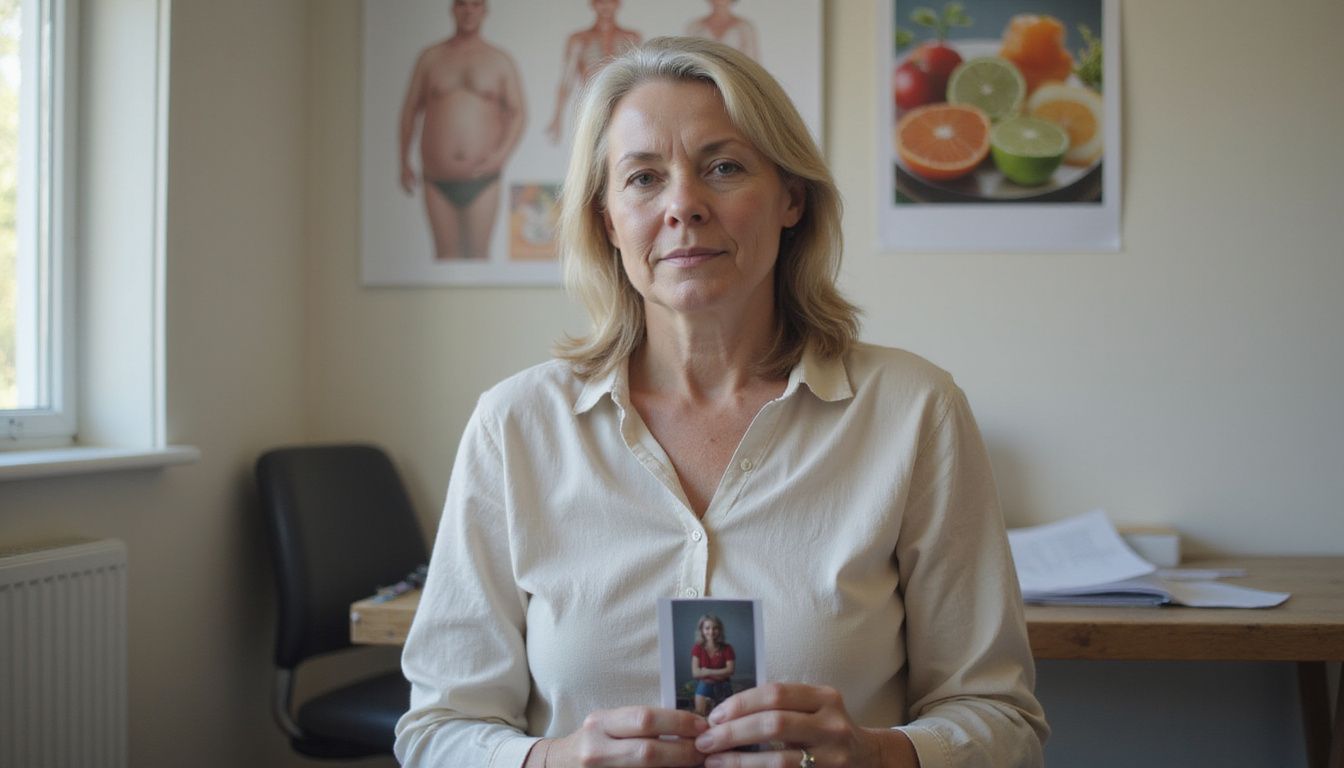Gabourey Sidibe Weight Loss: The Truth About Her Weight-Loss Surgery
Our Nutrition Assistant AI Suite will transform your body. You will lose fat, get toned, and build muscle. Gain confidence and optimal health.
If you feel stuck on your health goals or wonder whether weight loss surgery is right for you, Gabourey Sidibe’s story offers clear lessons. The actress from Precious faced serious medical risks, then chose laparoscopic bariatric surgery after being diagnosed with type 2 diabetes. Her experience shows why someone makes that choice, what the procedure includes, and how daily habits change afterward. You can use her path to guide safer, smarter decisions about your own care.
Key Takeaways
- Gabourey Sidibe underwent laparoscopic bariatric surgery in 2016 after a diagnosis of type 2 diabetes, following nearly a decade of attempts to lose weight naturally.
- The surgery uses small cuts to reduce stomach size, which supports an average loss of 40 to 70 percent of excess body weight within two years (NIH).
- Her plan after surgery focused on strict portions, cutting sugary drinks, and personal workouts, including yoga and strength training.
- The CDC links obesity, along with related issues such as high blood pressure and sleep apnea, to higher risks for at least 13 cancers and many chronic diseases.
- Sidibe explained that weight-loss surgery is not the easy way out, since success requires meal planning, therapy, and daily healthy routines.

Who Is Gabourey Sidibe?

Gabourey Sidibe is an award-winning actor who broke out in the film Precious. You may also know her from Empire and American Horror Story. Born in New York in 1983, she has shared openly that weight and health were ongoing struggles. In her memoir, Sidibe is opening up about weight-loss surgery and mental health, including major depressive disorder and bulimia nervosa, a disorder that involves bingeing and purging.
She often speaks about anxiety, diabetes, and the pressure to fit certain body images. Her message is simple, love my body, protect my health, and reject harmful stereotypes.
“I truly didn’t want to worry about all the effects that go along with diabetes,” she shared.
Gabourey Sidibe’s Weight Loss Journey
Sidibe opens up about weight management with honesty and detail. Her dramatic weight loss sparked fresh attention, but her focus stayed on long-term health and quality of life.
What Health Challenges Did Gabourey Sidibe Face?
Type 2 diabetes was a major turning point. Doctors also flagged high blood pressure and sleep apnea, conditions that raise the risk for heart disease and stroke. Joint pain made steps and daily movement hard. The longer these issues continued, the higher the chance of losing mobility and facing shorter life expectancy.
She had tried for nearly ten years to lose weight naturally before opting for surgery. Many people know this cycle well, strict diets, hard workouts, then limited results. Symptoms like fatigue, shortness of breath, and constant hunger can also strain your mood and energy.
- Centers for Disease Control and Prevention, “Type 2 Diabetes Risk Factors.”
- National Institutes of Health, “Obesity’s Impact on Health.”
How Did Type 2 Diabetes Affect Her?
Type 2 diabetes made daily life more complicated. She tracked blood sugar, changed meals, and added medicines to her routine. High blood sugar can lead to heart problems, kidney disease, and nerve damage, so the stakes were high.
On top of that, she worried about how the disease might limit work on set or travel schedules. Food choices felt risky, and the pressure was constant.
Diabetes ran my life more than I did.
That fear, plus medical advice, pushed her to choose weight loss surgery for health, not just the scale.
Reasons Behind Gabourey Sidibe’s Weight-Loss Surgery
Her decision was shaped by medical risks and a clear plan from her surgical team. The goal was to protect her health and prevent long-term damage.
What Health Risks Prompted Her Decision?
Untreated type 2 diabetes can harm vital organs and raise blood sugar to dangerous levels. High blood pressure and sleep apnea raise the chance of heart attack and stroke. In her case, doctors warned that delaying care could lead to more complications and fewer options later.
The choice was not about looks. It was about safety, comfort, and staying active for years to come.
Why Did She Choose Laparoscopic Bariatric Surgery?
Laparoscopic bariatric surgery uses tiny cuts instead of one large opening. This approach usually means less pain and a faster recovery than traditional open surgery. For many patients, including Sidibe, it offers a safer path to better blood sugar control and less strain on the heart and lungs.
Her aim was to lower disease risks and improve daily life. The procedure supported those goals while avoiding a long hospital stay.
What Is Laparoscopic Bariatric Surgery?
This surgery reduces stomach size through small incisions. Some versions also reroute a short part of the intestine. The result is feeling full with less food and absorbing fewer calories.
How Is the Procedure Performed?
Here is what typically happens inside the operating room.
- Surgeons make several small incisions, usually 0.5 to 1.5 cm long, in your abdomen.
- Tiny cameras and slim instruments go through those cuts, and the team views everything on a monitor.
- They fill the abdomen with carbon dioxide gas to create space and protect nearby organs.
- The surgeon reduces the stomach size, for example by creating a sleeve or removing a section, so you feel full sooner.
- In some procedures, a short segment of the small intestine is rerouted to reduce calorie absorption.
- Most patients spend one or two days in the hospital for monitoring and pain control.
- Activity trackers, such as an Apple Watch, can help you log steps during recovery.
- Light movement, like short walks or gentle cycling on a tricycle, supports circulation as you heal.
- Hearing success stories, including Gabourey Sidibe’s, can ease fear and build confidence before surgery.
- The operation usually lasts 1.5 to 3 hours, depending on your health and surgical plan.
What Are the Benefits for Weight Loss?
Studies show many patients lose 40 to 70 percent of their excess body weight within two years (NIH). Losing weight this way can improve or even resolve type 2 diabetes, lower blood pressure, and reduce sleep apnea.
Many people also report more energy and easier movement. Still, long-term success depends on steady habits, which brings us to the lifestyle changes she made after surgery.
How Did Gabourey Sidibe Adjust Her Lifestyle After Surgery?
Big results came from small, repeated choices. Food quality, portion size, and activity all worked together.
How Did She Change Her Diet?
Her plate shifted toward lean protein, vegetables, and high fiber foods. Processed snacks were reduced. She cut out sweet and fizzy drinks, which helped steady her blood sugar and stop cravings.
These changes also improved energy and focus. Simple swaps, like grilled chicken and greens for lunch, made it easier to stay on track.
What Is Portion Control and How Did She Use It?
Portion control means choosing smaller serving sizes and stopping when comfortably full. Sidibe measured her meals and used visual guides for proteins, grains, and vegetables.
You can try smaller plates, read labels, and pause halfway through a meal to check fullness. This approach helps manage calories without rigid rules, especially after surgery.
Why Avoid Sugary and Carbonated Drinks?
Sweet drinks spike blood sugar and pack extra calories. One 12 ounce soda has about 39 grams of sugar, which is more than the daily limit recommended by the American Heart Association for many adults. These drinks also raise the risk of type 2 diabetes.
Carbonated sodas can cause bloating. After bariatric surgery, bubbles may stretch a small stomach pouch, which makes portion control harder. Choosing water, unsweetened tea, or sugar free seltzer supports better results.
How Did She Include Exercise in Her Routine?
Sidibe worked with a trainer to build a steady plan. Cardio sessions improved endurance. Strength training built muscle, which helps the body burn more calories at rest. Flexibility work, like yoga and Pilates, reduced stress and tension.
A set schedule kept her consistent. Many people notice better sleep, higher energy, and more confidence after a few weeks.
What Does Gabourey Sidibe’s Exercise Routine Include?
Her training mixed movement and mindfulness. That blend supported both physical and mental health.
How Does Yoga and Pilates Help Her?
Yoga and Pilates build core strength, flexibility, and balance. They also ease stress and help you reconnect with your body after surgery. Gentle stretching lowers injury risk while you learn to move with better form.
These sessions burn calories at a steady rate without pounding your joints. Many people leave class calmer, which helps prevent emotional eating.
What Role Does Strength Training with a Personal Trainer Play?
Strength work builds muscle and reshapes your body over time. A trainer teaches good form, tailors the plan to your needs, and adjusts workouts as you get stronger.
I once felt nervous about lifting weights after an injury. A patient coach showed me safe progressions, and it soon felt doable. That same approach supports long-term results after surgery, especially when paired with yoga or Pilates.
What Motivated Gabourey Sidibe’s Weight Loss?
Her motivation came from health scares, therapy, and a desire to keep working and living fully. Roles like Precious made her public, yet the drive for change stayed personal.
How Did She Aim to Improve Mobility and Health?
She wanted to climb stairs without pain and handle daily tasks with less strain. After surgery reduced her stomach size, movement became easier. She added regular walks, yoga, and guided strength work to protect joints and build stamina.
The focus stayed on function, not just numbers on a scale.
How Did She Reduce Chronic Disease Risks?
Doctors diagnosed type 2 diabetes at age 32, which raised her risks for heart, kidney, and nerve problems. She shifted to high protein meals with more vegetables and fewer refined carbs. Research shows that losing just 5 to 10 percent of body weight can lower risks for diabetes and heart disease.
Regular exercise improved insulin sensitivity and circulation, supporting lasting health gains.
How Does Supporting Body Positivity Influence Her Journey?
Body positivity helped her make changes from a place of respect, not shame. She talked about caring for her face and her current body at every stage. The message was clear, you can seek better health while also rejecting narrow beauty rules.
This mindset turned progress into something to celebrate, not fear.
How Did Weight Loss Impact Gabourey Sidibe’s Mental Health and Self-Esteem?
Her decision reshaped daily routines and boosted her outlook. A healthier body made room for a calmer mind.
How Did She Challenge Beauty Standards?
Sidibe shared her choice to reduce her stomach size and refused to be defined by a clothing tag. She showed up in bold fashion, spoke openly about health, and asked fans to value strength and well-being over a single size.
That stance encouraged others to rethink what confidence really means.
How Did She Build Confidence and Self-Acceptance?
She set small goals and celebrated each win, which built steady self-trust. Positive statements, supportive friends, and therapy helped her flip harsh thoughts into kinder ones.
Daily gratitude, even for tiny steps, made confidence more durable.
What Can We Learn from Gabourey Sidibe’s Weight Loss Experience?
Her story highlights practical steps, medical support, and a mindset that puts health first. Small changes, done often, add up.
Why Is Prioritizing Health Important?
Taking care of your body lowers the risk of type 2 diabetes, heart disease, and high blood pressure. The CDC reports that obesity increases the risk for more than 13 cancers. Early action lets you live with fewer limits and more energy.
Moving regularly can also reduce symptoms of depression and anxiety by up to 30 percent, according to exercise research. Healthy routines build resilience for work, school, and family life.
What Myths About Weight-Loss Surgery Does She Debunk?
One major myth is that bariatric surgery is easy. It is not. Sidibe worked with a counselor, met with a nutritionist, and followed a strict meal plan. Ongoing exercise and daily food choices still drive success.
Another myth says only celebrities can get good care. Many hospitals offer programs, support groups, and payment plans. Talk with your primary care clinician to explore safe options in your area.
This article is for education only. For personal advice, speak with your healthcare team.
Conclusion
Gabourey Sidibe’s weight loss journey shows that real change comes from caring for your health and mind. Weight-loss surgery was one step, then steady habits kept the progress going. Her approach to food, movement, therapy, and body respect can guide your next move.
If you are considering weight loss surgery, ask questions, gather evidence, and build support around you. With a clear plan and steady follow through, you can protect your health and confidence for the long term.
FAQs
1. What type of weight-loss surgery did Gabourey Sidibe have?
Gabourey Sidibe underwent laparoscopic bariatric surgery, a procedure that reduces stomach size to help with significant weight loss. According to interviews and her memoir, this decision followed years of health challenges related to obesity.
2. Did Gabourey Sidibe combine surgery with other lifestyle changes for her weight loss?
Yes, she paired the surgical procedure with healthy eating habits and regular exercise routines. Medical experts agree that long-term success after bariatric surgery depends on ongoing changes in diet and physical activity.
3. Are there any statistics about the effectiveness of bariatric surgery like Gabourey Sidibe’s?
Clinical studies show patients often lose 50 percent or more of their excess body weight within two years after laparoscopic bariatric procedures. The American Society for Metabolic and Bariatric Surgery reports improved outcomes when patients follow medical guidance post-surgery.
4. How has Gabourey Sidibe described her personal experience with weight loss?
In public statements and her book, she shared feelings of relief from health risks such as diabetes following the operation. She also discussed increased confidence and energy levels as part of her journey toward better well-being.
Summary:
Gabourey Sidibe chose laparoscopic bariatric surgery due to persistent health concerns linked to obesity. Her approach included both medical intervention and lifestyle adjustments supported by clinical data on effective long-term results. Personal accounts highlight not only physical transformation but also emotional growth throughout the process.







